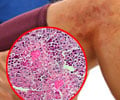Dog – man’s best friend, could turn out to be the worst enemy for asthmatic children. Having a dog at home may worsen asthmatic children’s response to air pollution says a recent stud
Dog – man’s best friend, could turn out to be the worst enemy for asthmatic children.Having a dog at home may worsen asthmatic children’s response to air pollution says a recent study. This study was carried out to analyze the connection between chronic cough, phlegm production (bronchitis) and dog & cat ownership in 475 children. Dr. Rob McConnell, professor of preventive medicine at the University of Southern California's Keck School of Medicine, performed this study.
The asthmatic kids involved in the Children's Health Study, "a longitudinal study of air pollution and respiratory health" were from southern Californnia.Significant increase in cough, phlegm production and bronchitis responses to the measured pollutants, like nitrogen dioxide, ozone, particulate matter and acid vapor was seen in kids with pet dogs, according to the scientists.
On the other hand, kids who did not have any pets or had only cats, showed no increase in the symptoms.
McConnell said, "Cats are highly allergenic, and children with asthma are often allergic to cats. Therefore if an allergen were enhancing the lung's response to air pollution, we'd be more likely to see an association with cats. But in this study we see an effect of air pollution in homes with dogs, so we think endotoxin exposure is a more likely explanation for our results than allergen exposure."
Bacteria produce endotoxin and release it when its cell walls are destroyed. When these endotoxins are inhaled, they cause constriction of the airways and an inflammatory response in the lungs.
McConnell says, "There's experimental literature that shows both allergens and endotoxin interact with air pollution and increase the effect of each other. But there's been very little study to see if these experiments have relevance for the general population of children with asthma."
Advertisement
The online edition of "Environmental Health Perspectives" has this study in it.
Advertisement
GAY











